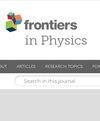前沿 | 基于 CNN 变压器的电缆绝缘缺陷分类方法
IF 1.9
3区 物理与天体物理
Q2 PHYSICS, MULTIDISCIPLINARY
引用次数: 0
摘要
电缆绝缘缺陷检测可确保电气安全,防止事故发生,延长设备使用寿命,保障系统稳定运行。针对传统电缆绝缘缺陷检测与识别困难的问题,本文提出了利用超声波进行电缆绝缘缺陷检测并结合卷积神经网络(CNN)-变压器模型进行电缆绝缘缺陷分类的方法。首先利用超声波探头获取不同的电缆绝缘缺陷信号,然后利用卷积神经网络-变压器模型对不同的电缆绝缘缺陷进行分类。利用 CNN 从输入信号中初步提取电缆绝缘缺陷的特征,然后利用时间序列变压器中的多注意机制提取电缆绝缘缺陷信号的瞬态局部特征和周期性全局特征。通过时间序列变换器中的多注意机制提取电缆绝缘缺陷信号的深层瞬态局部特征和周期性全局特征,最后通过全连接层和 softmax 分类器输出识别结果。结果表明,缺陷处存在超声波反射和透射现象,通过缺陷回波时间和振幅可以准确反映出不同的缺陷,利用 CNN 变压器模型识别电缆绝缘缺陷的准确率达到 100%,并具有良好的泛化能力。本文章由计算机程序翻译,如有差异,请以英文原文为准。
Frontiers | A cable insulation defect classification method based on CNN-transformer
Cable insulation defect detection ensures electrical safety, prevents accidents, extends equipment life and guarantees stable system operation. For the traditional cable insulation defect detection and identification of difficult problems, this paper proposes the use of ultrasonic cable insulation defect detection and combined with the Convolutional Neural Network (CNN)-transformer model of cable insulation defect classification method. Firstly, the ultrasonic probe is used to obtain different cable insulation defect signals, and then the CNN-transformer model is used to classify different cable insulation defects. The CNN is used to initially extract the characteristics of the cable insulation defects from the input signals, and then the multi-attention mechanism in the time series Transformer is used to extract the transient local and periodic global characteristics of the cable insulation defect signals. The deeper transient local features and periodic global features of the cable insulation defect signal are extracted by the multi-attention mechanism in the time series Transformer; finally, the recognition results are outputted by the fully connected layer and softmax classifier. The results show that ultrasonic reflection and transmission phenomena occur at the defects, and different defects can be accurately reflected by the defect echo time and amplitude, and the accuracy of cable insulation defect recognition using the CNN-transformer model reaches 100%, with good generalization ability.
求助全文
通过发布文献求助,成功后即可免费获取论文全文。
去求助
来源期刊

Frontiers in Physics
Mathematics-Mathematical Physics
CiteScore
4.50
自引率
6.50%
发文量
1215
审稿时长
12 weeks
期刊介绍:
Frontiers in Physics publishes rigorously peer-reviewed research across the entire field, from experimental, to computational and theoretical physics. This multidisciplinary open-access journal is at the forefront of disseminating and communicating scientific knowledge and impactful discoveries to researchers, academics, engineers and the public worldwide.
 求助内容:
求助内容: 应助结果提醒方式:
应助结果提醒方式:


